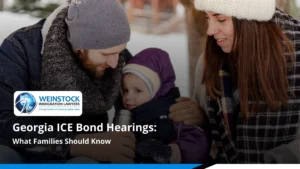Asylum Cases Rejected (1/2)
Asylum Cases Rejected
 It is no secret that the Trump administration is working hard to undermine and discourage immigrants from applying for immigration benefits. They are trying to destroy the asylum system through additional and unnecessary barriers, making it more difficult for those seeking refuge in the United States to be granted asylum. This is an worrying trend knowing that the U.S. government’s decision to either grant or reject an asylum request can be a life-or-death matter.
It is no secret that the Trump administration is working hard to undermine and discourage immigrants from applying for immigration benefits. They are trying to destroy the asylum system through additional and unnecessary barriers, making it more difficult for those seeking refuge in the United States to be granted asylum. This is an worrying trend knowing that the U.S. government’s decision to either grant or reject an asylum request can be a life-or-death matter.
Based on recently released data from the U.S. immigration courts, the Transactional Records Access Clearinghouse (TRAC) found that the share of asylum requests being turned down by immigration judges has hit the roof since mid-2017. Incorrectly rejecting such requests has already resulted in death for asylum seekers who were forced to return to their countries of origin.
Individuals who flee to the United States in search of safety can request asylum at the U.S. border
Most border crossers without appropriate documentation are subjected to a fast-track deportation process called “expedited removal,” unless they express fear of returning to their home countries. These individuals then are referred to an asylum officer for a “credible fear interview” who determines the likelihood of making a successful asylum claim. During the interview, if the officer finds that there is not a “significant possibility” that the asylum seeker could establish eligibility for asylum, the asylum-seeker can appeal to an immigration judge for a Credible Fear Review (CFR). The judge’s decision on the matter is final. The data analyzed by TRAC indicate that the share of positive outcomes nationwide from CFRs had fallen to 14.7 percent as of June 2018 (75 out of 510 cases), which is more than half of what it was in June 2017 (32.7 percent, or 123 out of 376). The percentage of CFRs that resulted in a positive decision has been trending downward over the past 12 months.Related posts

Stewart Detention Center Lawsuits Challenge ICE Policies in Georgia Federal Courts
Summary The Stewart Detention Center in Lumpkin, Georgia, is at the center of ongoing legal challenges to ICE’s detention practices. Stewart is one of the

Immigration Bond Hearings in Georgia: What ICE Detainees and Families Need to Know
Summary Families often feel overwhelmed when a loved one is detained by ICE. Common questions include whether the detainee can be released, and what a bond of hearing

Habeas Corpus Victory: Karen Weinstock Wins Bond Hearing Rights for ICE Detainees in Georgia
Summary A federal judge in Georgia has restored the right to bond hearings for immigrants detained by ICE within the U.S. Immigration attorney Karen Weinstock
